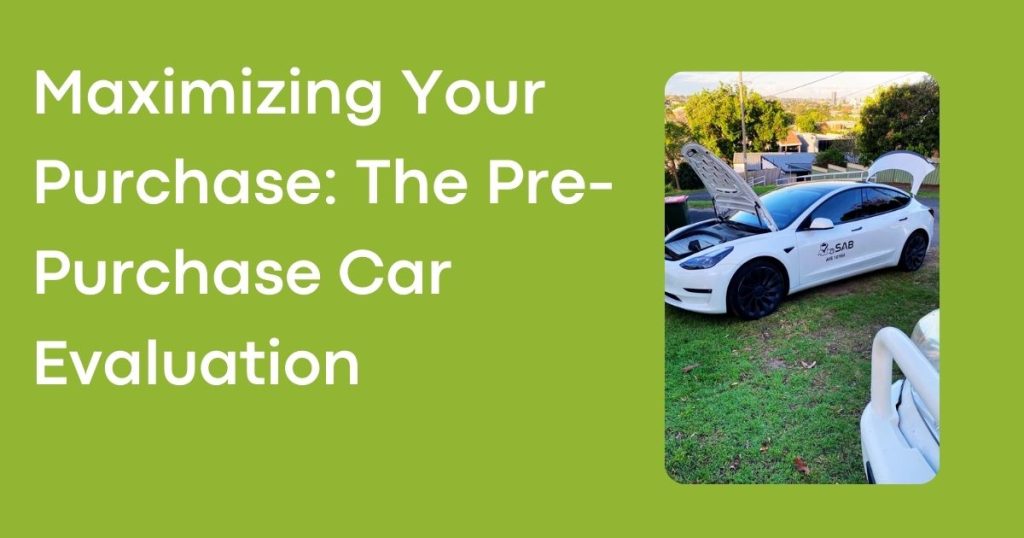Purchasing a used vehicle is always a bit risky. Without full transparency into how the previous owner maintained and drove the car, it’s impossible to know what flaws might be hiding beneath the surface. However, you can minimize the risk by implementing a rigorous pre-purchase car evaluation process. A thorough inspection before any transaction can potentially save you thousands in unforeseen repair costs down the road.
This guide will walk you through the key elements of a comprehensive pre-purchase car evaluation. Follow these tips to make an informed purchase decision.
Research Common Problems with the Specific Model
The evaluation process should begin even before you start looking at vehicles. Take some time to research what types of issues routinely affect the makes and models you’re considering. Learn about any widespread defects, problem areas, or recall notices associated with that vehicle line. For example, certain models may have notoriously faulty transmission designs. This research will allow you to go into the evaluation with eyes open to the specific vulnerabilities of a given model.
Only Use ASE Certified Mechanics
One critical decision is selecting who will perform the pre-purchase inspection. You want ASE certified mechanics, or technicians certified by the National Institute for Automotive Service Excellence. ASE certification requires passing intensive exams that demonstrate mastery of all vehicle systems. Facilities with ASE Master Technicians have the highest level of qualifications to handle used car inspections. Also look for mechanics who specialize in the particular make of vehicle when possible.
Demand a Complete Written Report
A quality evaluation should conclude with a comprehensive written report that you can keep for reference. This report essentially serves as a checklist, documenting the condition of all systems and components inspected. It should clearly outline problems found, and include photos of any damaged or worn parts. Only accept evaluations that provide this level of detailed documentation. Verbal summaries alone are insufficient.
Components to Be Inspected
Of course, the most important element of any pre-purchase car evaluation is the actual inspection process. At a bare minimum, the full mechanical inspection should include:
- Engine, transmission, drivetrain testing
- Fluid levels and condition
- Brakes, rotors, calipers, pads, and lines
- Steering and suspension
- Electrical, including battery and alternator
- HVAC and emissions testing
- On-board computer diagnostics for any codes
Equally important is a comprehensive road test checking acceleration, braking, handling, vibrations, and control. A proper pre-purchase car evaluation generally takes 1-2 hours to fully complete.
Negotiate Repairs Before Purchase
In most cases, some issues will turn up during the pre-purchase inspection process. Before finalizing the sale, get written estimates for all recommended repairs and negotiate having the seller complete them. For example, something like worn brake pads is relatively inexpensive to replace. But a faulty transmission could mean walking away from the deal. Don’t buy until you’ve reached an agreement over the repairs.
Take Your Own Test Drive Too
As thorough as the mechanic’s evaluation will be, you should still do your own test drive as well. Get a feel for potential issues like unusual vibrations, poor alignment, weak acceleration, or brake pulling. Your test drive checks for drivability factors, while the inspection focuses on the technical mechanics under the hood. Combining both gives you a complete picture.
Take Warranties into Account
If the vehicle you’re considering has an existing warranty, find out exactly what is covered. This may defray repair costs substantially. However, don’t rely entirely on the warranty, as many have significant limitations. Still do a full inspection to identify issues proactively.
Weigh Findings Against Vehicle History
Cross reference the evaluation findings with a full vehicle history report from sources like CARFAX. Look for red flags like previous major damage, flood records, or multiple past owners. If serious issues were already repaired, they shouldn’t turn up again in the inspection. But mismatches between reports and inspection results are a warning sign.
Protecting Your Investment
Without a proper pre-purchase car evaluation, otherwise minor issues can balloon into costly repairs shortly after purchase. However, not all inspections are truly comprehensive. By choosing ASE-certified mechanics, insisting on written reports, test-driving yourself, and negotiating repairs, you can maximize your protection. While it requires an extra upfront investment, a rigorous pre-purchase car evaluation saves thousands over the life of your vehicle.
When it comes to a car inspection for buyers, these practices ensure that you buy your next used car with greater peace of mind. These inspections help you make well-informed decisions, avoid unexpected issues, and save money in the long run.
